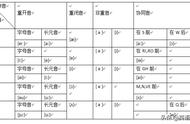【祈使句】
1. 定义:用于表达命令、请求、劝告、警告、禁止等的句子叫祈使句。
2. 时态:使用_一般现在时态。
3. 结构:动词原形+其他成分+ please. 否定祈使句在动词原形前面加Don’t。如:
Be quiet in the classroom, please.
在教室里请保持安静。
Don't fight. 不要打架。
【情态动词have to 和must】
1. 情态动词have to和must都表示“必须”的意思。have to 表示从客观条件上来看必须做某事;must表示说话人主观上必须要做某事。如:
① There is no bus, you have to walk home. (没有公交车是客观条件)
没有公共汽车,你必须走回家。
② I must study English well. (想学好英语是一种主观想法)
我必须要学好英语。
2. have to有人称、数和时态的变化,而must 只有一种形式。如:
He has to stay at home, it's raining.
他必须待在家中,下雨了。
3.在否定结构中don't have to表示“不必要”, 而mustn't表示“禁止”。如:
You don't have to wait for him.
你没必要等他。
You mustn't play with fire. It's dangerous. 你禁止玩火。那很危险。

【why引导的特殊疑问句】
1. 定义:特殊疑问副词why 在句子中用来提问原因。
2. 结构:Why + do(n't)/ does(n't) + 主语+ 其他?
3. 回答:Why 引起的特殊疑问句只能用because来回答。如:
—Why do you like monkeys?
你为什么喜欢猴子?
—Because they are very clever.
因为它们很聪明。
【where 引导的特殊疑问句】
1. 定义:特殊疑问副词where 在句子中用来提问__________。
2. 结构:Where + be + 主语+ 其他?
Where + do/does + 主语+ 动词原形+ 其他?如:
—Where are you from? 你来自哪里?
—I am from Shandong. 我来自山东。
—Where does Peter live? 彼得住在哪里?
—He lives in UK. 他住在英国。
【否定疑问句】
在本课中“Isn't she beautiful? ” 是否定疑问句。
结构:助动词与not的缩写式+ 主语+ (实义动词) + 其他?
回答:回答时要“根据事实,前后一致,翻译相反”。如:
—It's raining all day. Isn't it boring?
— Yes, it is. I can't go out to play.
“雨下了一整天了。难道不令人讨厌吗?”
“不,是挺令人讨厌的。我不能出去玩了。

【现在进行时态】
1.定义: 现在进行时表示现在或现阶段正在进行或发生的动作或存在的状态。
2.构成: 助动词be (is/am/are)+ v. ing。
时间状语标志:now, at the moment, look, listen 或“It's+某一时刻”等。
3.句式结构:
①肯定句:主语+ am/is/are + v. ing.
②否定句:主语+ am/is/are + not + v. ing.
③一般疑问句:Am/Is/Are + 主语 +v. ing?
肯定、否定回答:Yes, I am./No, I'm not.
Yes, … is./No,… isn't.
Yes, … are./No, … aren't.
④特殊疑问句:特殊疑问词+ am/is/are + 主语+ v. ing?
4. v. ing的构成方法:
①规则动词后加ing。如:
watch —watching
read —reading
listen —listening
②以不发音字母e结尾的动词去掉e, 再加ing。 如:
make —making
use —using
exercise —exercising
live —living
③以重读闭音节结尾的动词,末尾只有一个辅音字母时,双写这个辅音字母,再加ing。如:
put— putting
stop — stopping
sit — sitting
begin —beginning

声明:整理自网络!











